By Jay Glascock, PMP, CCP and Carmelo Melendez, P.E., PMP
With responsibility for the oversight of legacy environmental sites across the nation, the Department of Energy’s Office of Legacy Management utilizes a variety of resources and best practices to protect human health and the environment, engage with a diverse group of stakeholders, and educate and inform the public.
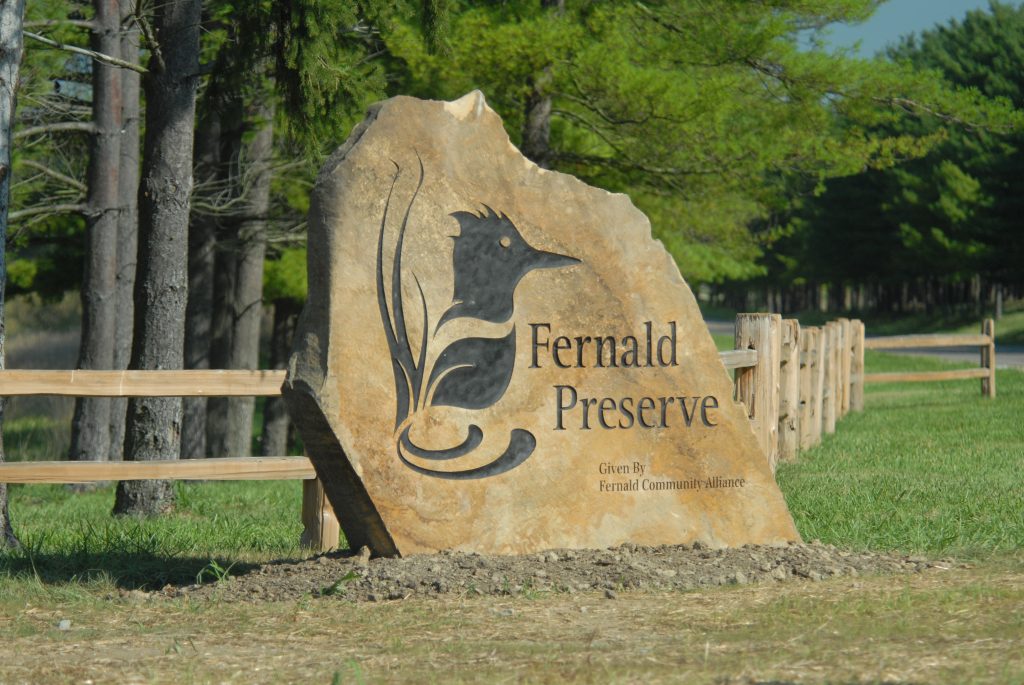
Managing legacy environmental sites, where cleanup has been completed and an adequate and durable remedy is now in place, is a multi-level responsibility. It takes continuous learning and personnel working together to be fully successful and effectively implemented. Collaboration, consultation with stakeholders, and teamwork is instrumental to effective long-term stewardship.
The Office of Legacy Management, within the Department of Energy (DOE), shapes the future of legacy sites through a commitment to science, engineering, and long-term stewardship. The important work of stewardship is the core mission of engineering managers. They ensure the physical controls, institutional controls, and other mechanisms needed to protect the surrounding communities and the environment.
In carrying out these responsibilities, engineering managers leverage extensive experience and a variety of interrelated best practices.
Growing Responsibility
The Office of Legacy Management was established in 2003 to manage DOE’s responsibilities associated with the closure of World War II sites and Cold War-era locations, many of which were used to operate, research, produce, and test nuclear weapons and conduct other scientific and engineering research activities. The office is primarily a science and engineering organization, geographically separated, and charged with protecting human health and the environment at 101 sites in over 30 states and territories, from Puerto Rico to Alaska. By 2030, the number of legacy sites is expected to grow to nearly 125, under various regulatory frameworks, requiring ever more complex oversight.
A legacy site in Fernald, Ohio, is an example of this deliberately planned transformation. The former uranium ore processing facility, built initially for the Atomic Energy Commission and operated from 1951 to 1989, was remediated and restored and is now home to the Fernald Preserve
After environmental remediation is completed at a site where there is no continuing mission, responsibility is transferred to the Office of Legacy Management for post-closure activity. For sites where residual hazards remain, such as disposal cells and groundwater contamination, engineering managers conduct long-term surveillance and maintenance to ensure the continued protection of human health and the environment. These residual risks are maintained in a sustainable and safe condition to allow beneficial use in keeping with the vision of the surrounding communities and consistent with each site’s attributes.
The office is responsible for maintaining the continuity of stewardship while a legacy site transitions from cleanup to long-term care. In most cases, environmental remedies installed by the department, or another cleanup organization such as the U.S. Nuclear Regulatory Commission, are conservative in nature and often include multiple layers of protection. This protection starts with a conservatively designed disposal cell cover or groundwater remediation strategy and can be extended by increasing the extent of the site boundary or incorporating institutional controls such as limiting access to the site or prohibiting the drilling of offsite wells.
Engineering managers safeguard those investments by conducting maintenance and surveillance, record-keeping, inspections, groundwater monitoring, pump and treat activities, cap repairs, and many other best practices. They oversee the disposal site according to a long-term surveillance plan. This guiding regulatory document ensures the disposal cell system continues to prevent the release of contaminants to the environment. Engineering managers conduct annual inspections of the site to evaluate the condition of surface features, perform site maintenance as necessary, and monitor groundwater to ensure the continued integrity of the disposal cell. This best practice ensures that the contaminated groundwater does not migrate off-site and prevents residual contamination.
Community in Mind
Close coordination with federal, state, and local environmental and public health agencies is essential to monitor the environmental impact of legacy sites through air, soil, and water testing. As a best practice, engineering managers collaborate with community alliances or development corporations to achieve the desired end state.
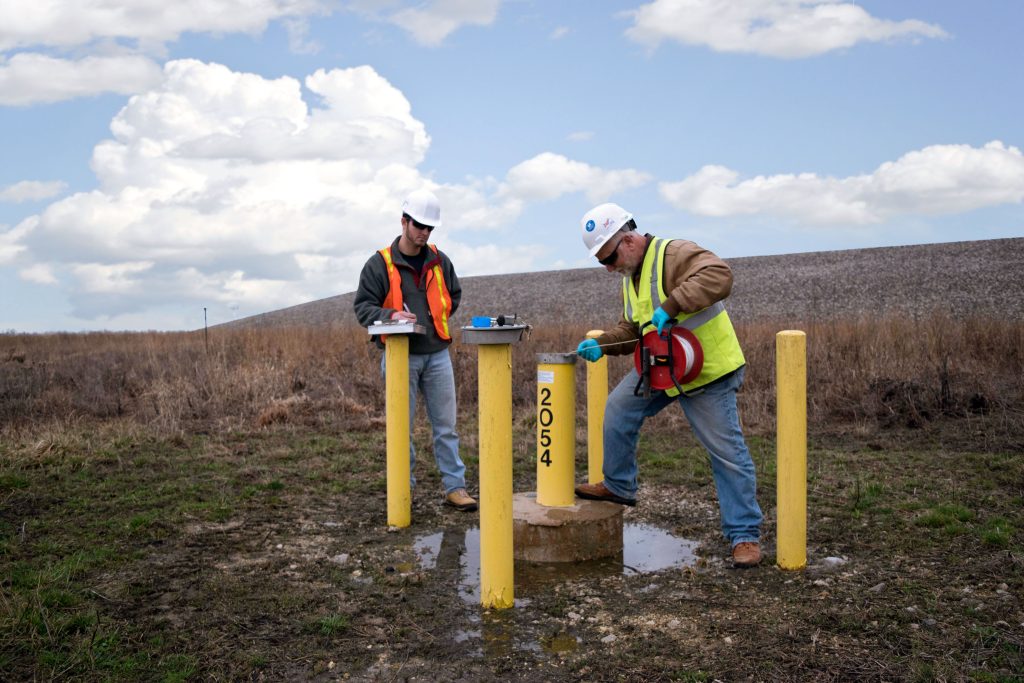
Legacy sites are often returned to the community to be reused as playgrounds, dog parks, wildlife refuges, and other beneficial outdoor recreation spaces enjoyed by residents, local groups, and tourists. Engineering managers facilitate this. Some locations have been transformed from production centers into nature preserves or wildlife refuges and open spaces boasting hundreds of species in multiple habitats.
For sites where residual hazards remain, such as disposal cells and groundwater contamination, engineering managers conduct long-term surveillance and maintenance to ensure the continued protection of human health and the environment.
A legacy site in Fernald, Ohio, is an example of this deliberately planned transformation. The former uranium ore processing facility, built initially for the Atomic Energy Commission and operated from 1951 to 1989, was remediated and restored and is now home to the Fernald Preserve. Featuring large tracts of open water, upland forests, a lengthy riparian corridor, and tall grass prairies, the site is one of the largest manmade wetlands in Ohio. It also is home to a 10,000-ft² Visitors Center, which is free to the public and receives thousands of guests each year, including many students who are offered educational opportunities in science, technology, engineering, and mathematics.
Monitoring Remediation
The Office of Legacy Management is the federal land manager and steward of cultural, historical, and natural resources at sites that have been successfully cleaned up and have remedies in place. As a best practice, engineering managers work closely with federal, state, local, and tribal governments to clearly set expectations and monitor the results of remedial activities to ensure public and environmental safety for generations to come.
Sampling for groundwater contamination is another primary responsibility. At Weldon Spring, Mo., the Atomic Energy Commission acquired property in 1955 that it used to process uranium ore. Because of those operations, the site contained chemical and radiological contaminants in various media.
Remediation of the chemical plant and quarry included a 170-acre prairie restoration surrounding the disposal cell. While active remediation has been completed, areas that still have contamination, such as the groundwater, continue to be monitored as part of the remedy.
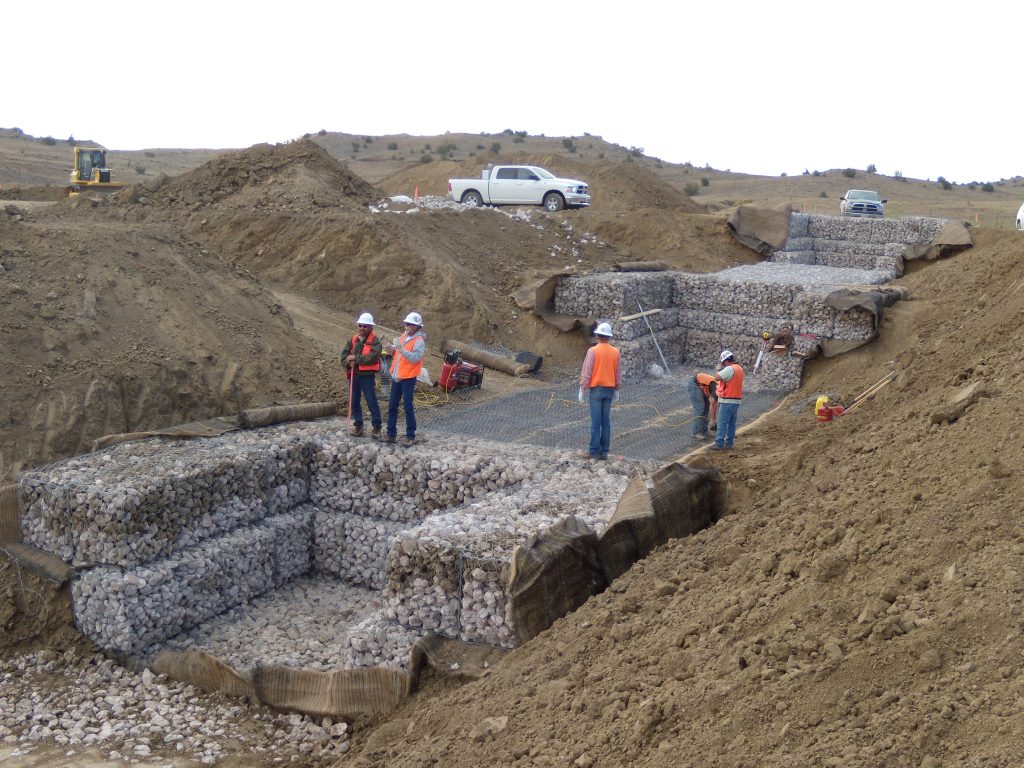
Climate Considerations. There are many climate-related factors, such as precipitation, that may impact how engineering managers conduct long-term surveillance and maintenance of remediated sites. To address this, the Office of Legacy Management has collaborated with DOE’s Lawrence Berkley National Laboratory to evaluate how potential climate changes may impact the monitoring, inspection, and maintenance at managed sites. For example, in the Southwest Climate Region, which expects an increase in extreme precipitation events and greater drought frequencies over the next 50 years, lies the Shiprock Disposal Site, N.M. The atmospheric circumstances suggests there will be greater variations in river stages on the neighboring San Juan River and the potential for secondary source releases or damage to extraction trenches on the floodplain.
As a best practice, engineering managers have opened their aperture and looked beyond the boundary of a disposal cell with aerial surveys to determine what may be approaching, such as an erosional feature. The intent is to address this feature before it impacts the integrity of the site and possibly the disposal cell (which contains uranium mill tailings and associated contaminated material).
Educating the Public
As part of the long-term stewardship of its controlled sites, the Office of Legacy Management engages in person, print, and digitally through public meetings, conferences, and outreach events. As a best practice, engineering managers communicate with their site’s respective regulator, community alliance organization, tribal community, and others to keep them abreast of current and planned long-term care activities.
Engineering managers directly engage with communities through events like STEMsation, which reaches thousands of high school students on the Navajo Nation. Students receive information related to disposal sites near their communities. For instance, through STEMsation, students at Shiprock High School were given an overview of the site’s disposal cell and learned about evaporation ponds and the activities at the site to clean contaminated groundwater using extraction wells.
At some legacy sites, state-of-the-art educational facilities are built for visitors to explore STEM and to learn about DOE’s role in America’s nuclear history.
Preserving History
The Office of Legacy Management is also responsible for managing some historically significant sites related to the Manhattan Project, the Cold War nuclear weapons production complex, and the nation’s early atomic energy program. Its intent is to transparently share information about the role such legacy sites played in America’s nuclear history.
The Atomic Legacy Cabin in Grand Junction, Colo., is listed on the National Register of Historic Places. The cabin showcases the critical role the site played in the Manhattan Project as the center for uranium exploration and processing. The Office of Legacy Management has restored the cabin and uses it as a center for education and public outreach.
At Grand Junction, the scientists and engineers who helped develop the domestic uranium industry are featured today for the public to see. Historic preservation is a best practice and an important way to pass along what happened in the past.
Partnering With Industry
Success for legacy site management can only be obtained by partnering with industry and consulting with tribal nations, state and local governments, community organizations, and interested members of the public who know an area’s history the best. A good example is a partnership with the Navajo Nation. Based on years of experience and familiarity with land management, the Navajo Nation has provided valuable insight to erosion control on native soils and worked closely with engineering managers on the long-term care of disposal sites on Navajo land. At Monument Valley, Ariz., a former uranium processing site, a groundwater nitrate plume was remediated by using native shrubs that took up the contaminants as part of natural transpiration. This approach of enhancing natural processes for cleanup was important to the Navajo Nation.

As a best practice, engineering managers stay active with other national organizations, including the Energy Communities Alliance and the National Governor’s Association. They work closely with state and federal regulators to share information, collaborate on environmental solutions and public meetings, and understand and address potential impacts to surrounding areas. Strong support from local communities, state organizations, and Congressional representatives is an imperative for stewardship activities to continue.
Collaborating Internationally. International collaboration in this subject area is an important value the office provides. It routinely works with international organizations such as the International Atomic Energy Agency (IAEA). An example of this at work came during an IAEA Workshop in Colorado, held in assistance with efforts to support member countries in their cleanup of legacy uranium mining and milling sites.
At the Durango, Colo., site, DOE had built a disposal cell to contain 2.5-million-yd³ of radioactive tailings and buildings from the days of uranium processing at a mill in town. The mill operated from 1942 to 1963, producing vanadium and uranium. The cell covers 42-acres and is nearly a 0.5-mi long. A tour of the Durango disposal cell was conducted during the workshop to give an end-state visual to the visiting countries.
An Enduring Responsibility
The Office of Legacy Management is committed to long-term stewardship and protection of public health and the environment from hazards associated with the cleanup of legacy sites that played a critical role in America’s nuclear history. These sites may have residual contamination or ongoing waste management responsibilities for as long as necessary or until there are no requirements for further response actions. DOE will be there for as long as it takes, for there is a moral obligation to tackle the environmental legacy; to honor the obligations of the past; and to make steady and sustained progress on the cleanup in a safe, efficient, and cost-effective manner.
The long-term stewardship best practices undertaken by engineering managers are important. From monitoring remedies to engaging stakeholders and partnering with industry, these individuals have an enduring responsibility. As with the Fernald site, the Office of Legacy Management honors the rich past of these locations and celebrates the work done to restore their environmental health without erasing the past. When stewardship comes to an end, a site is returned to the community, as pristine as possible, and as a living recognition to all that occurred there. That is a legacy to which we can be proud.
Effective Oversight
Contamination at many legacy sites cleaned up by DOE restricts or limits their present use by the public. To protect human health and the environment, long-term stewardship and management is necessary.
Protect human health and the environment. The protection of human health and the environment is the foremost goal. This includes management of closed disposal cells and contaminated soil and groundwater. The Office of Legacy Management leverages DOE’s National Laboratories to develop science and engineering solutions relevant to remediation and stewardship, with the aim to increase the effectiveness and reduce the costs of activities over time.
Manage legacy records. The second goal is managing legacy records and making them accessible to the public and future generations. The office ensures that the requisite information generated during cleanup is preserved and available for the future in a timely, cost-effective, and understandable manner.
Deliver on commitments. The third goal is ensuring that the pension and post-retirement benefit commitments for former workers are maintained. The Office of Legacy Management funds pensions and post-retirement benefits, including medical and life insurance plans, for over 9,000 former contractor workers and spouses.
Facilitate beneficial reuse. The fourth goal is facilitating the beneficial reuse of closed sites. After receiving a remediated site, the office becomes the federal land manager and steward of natural and cultural resources. Institutional controls are implemented to manage lands, facilities, materials, and resources under its jurisdiction. Many of these controls are required as part of the decision process established by various laws, such as the Resource Conservation and Recovery Act.
Sustain management excellence. The fifth goal is aimed at sustaining management excellence. The office is designated as a high-performing organization and operates within the parameters set by the Office of Management & Budget and the Office of Personnel Management.
Engage stakeholders. Stakeholder engagement is an important component of stewardship. As this goal infers, the Office of Legacy Management wants greater, meaningful involvement, especially from tribal and local community members, in all long-term stewardship activities. Those with questions and feedback on current and planned work are encouraged to express their thoughts to a site’s engineering manager. The office values working closely with representatives of other federal agencies, tribes, state and local governments, and community organizations.
Jay Glascock, PMP, CCP, is Director for Site Operations, and Carmelo Melendez, P.E., PMP, is Program Office Director, Office of Legacy Management, Department of Energy. They can be reached at jay.glascock@lm.doe.gov; and carmelo.melendez@hq.doe.gov.
More News from TME
-
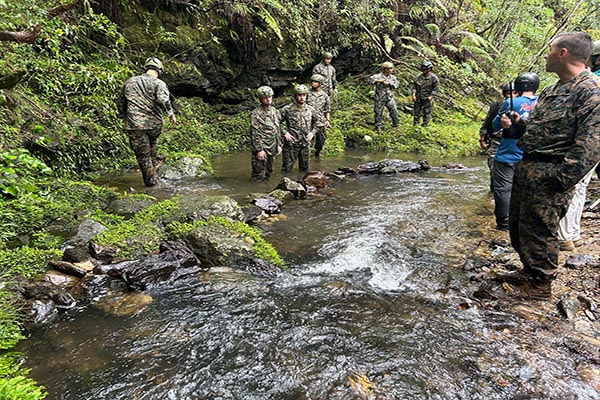
Deploying Renewable Generation Through Small-Scale Hydropower
A field demonstration and ongoing investigation of modular hydrokinetic turbines by the U.S. Army Engineer Research & Development Center’s Construction Engineering Research Laboratory illustrates the potential applicability for using the technology on military deployments. -
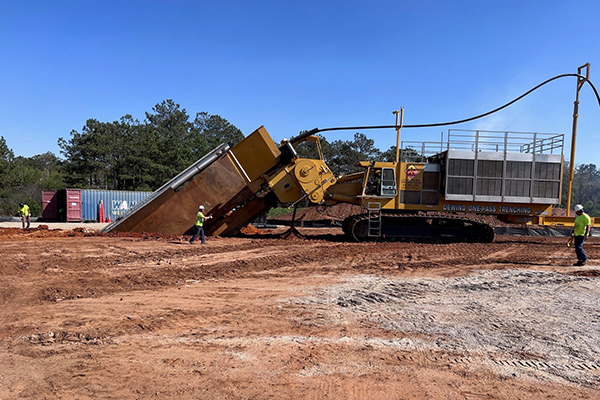
Rethinking Traditional Treatment Systems for PFAS Remediation
At two U.S. Air Force bases impacted by historical releases of aqueous film-forming foam, innovative methods in treating PFAS in both surface water and groundwater provide examples of success in safeguarding health for military personnel and nearby communities. -
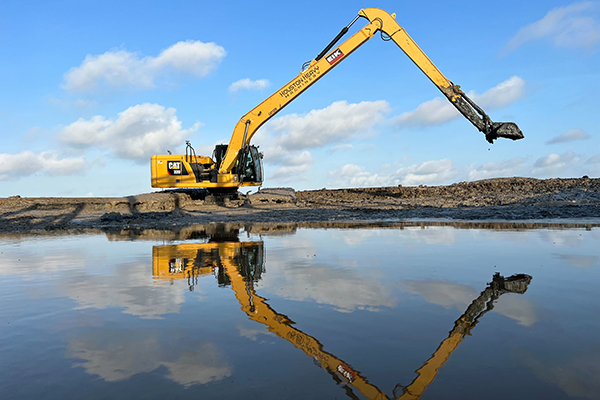
Tackling Restoration Projects With Amphibious Excavators
When faced with soft and wet underfoot conditions, such as at a recent channel dewatering, excavation, and repair project for USACE Galveston District, amphibious excavators offer a scalable way to contour difficult site characteristics.